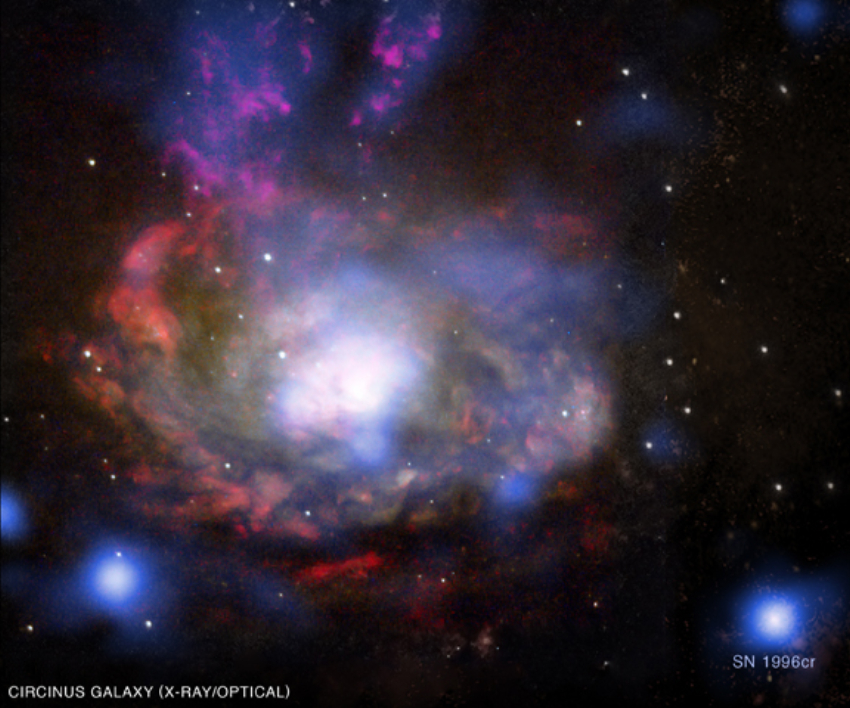
 Credit: X-ray (NASA/CXC/Columbia/F.Bauer et al);
Optical (NASA/STScI/UMD/A.Wilson et al.)
Credit: X-ray (NASA/CXC/Columbia/F.Bauer et al);
Optical (NASA/STScI/UMD/A.Wilson et al.)
Supernova in the Bits
Astronomers compete to use the best telescopes to study their favorite objects. But what about all those other objects that fall within the field of view? Those get recorded too, and often lay hidden away until some enterprising researcher digs through the data mine to unearth (or unsky?) diamonds or gold nuggets. One particular point of interest is shown in the image above of the center of the (relatively) nearby Circinus galaxy. In the image, X-ray emission from the galaxy, as seen by the Chandra X-ray Observatory, is shown in blue, while other colors show a composite optical image from the Hubble Space Telescope. The X-ray image revealed a bright point-like source of emission (shown in the lower right of the image) which had a rather low-energy spectrum, was relatively bright and seemed to be growing brighter over a timespan of years. Going through the archive of data from 18 ground-based and satellite telescopes, astronomers were able to confirm that this object is in fact a supernova, a remnant of a star which exploded in 1996. Thus was found one of the 5 nearest supernovae in the last 25 years.
What's locked away in your closet?
Published: October 06, 2008
<
HEA Dictionary ● Archive
● Search HEAPOW
● Other Languages
● HEAPOW on Facebook
● Download all Images
● Education ● HEAD
>
Each week the HEASARC
brings you new, exciting and beautiful images from X-ray and Gamma ray
astronomy. Check back each week and be sure to check out the HEAPOW archive!
Page Author: Dr. Michael F. Corcoran
Last modified Tuesday, 27-Feb-2024 10:06:53 EST


